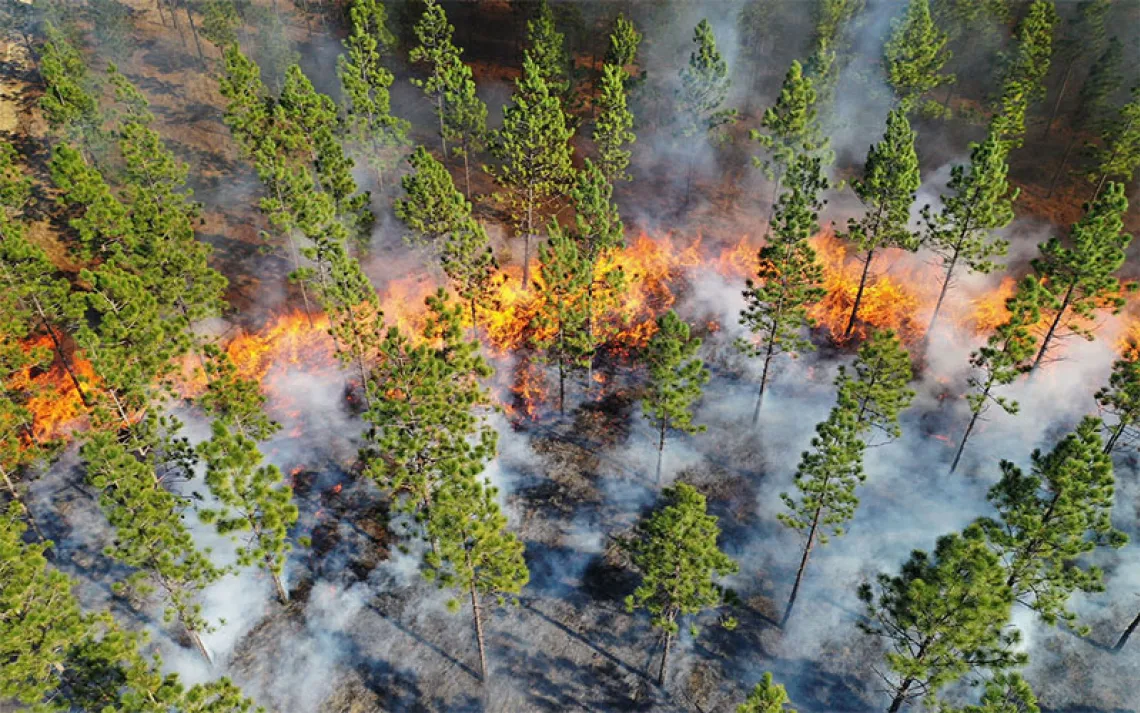Some Lessons From the Sierra Club's 125-Year History
Sierra Club executive director Michael Brune says the organization's history is one of continuous growth and change

Illustration by Mike Ellis

LATE IN LIFE, THOMAS JEFFERSON wrote to his friend (and sometime rival) John Adams that he liked "the dreams of the future better than the history of the past." I'm with Jefferson on this one. Although I'm proud of the Sierra Club's 125-year legacy, what I wake up excited about is the work we're doing right now to build a better future.
Maybe what bothered Jefferson about history is that it's so often confused with nostalgia. There's nothing necessarily wrong with nostalgia, but too often a fond remembrance of the past leads us to misremember. We recall the past as purely great, even when it wasn't. In comparison, history is clear-eyed and unsentimental. The past illuminates the present—even if it's only to remind us what not to do.
What does the Sierra Club's history reveal about the organization today and our trajectory? Writer and longtime environmental activist Rebecca Solnit shares her thoughts in an essay ("The Sierra Club's 125-Year History Has Been a Story of Evolution"). Here are some other lessons that stand out.

Sign up to receive Sierra News & Views
Get articles like this one sent directly to your inbox weekly.
With this action you affirm you want to receive Sierra Club communications and may vote on policy designated by the Sierra Club Board.
The first is that our belief in the intrinsic value of the natural world unites us. The original Sierra Club members came from different backgrounds and at least seven countries; many, like John Muir, were immigrants. Women were invited to join—a radical move for the time. They all shared one conviction: That we would lose something precious if unrestricted mining, logging, and grazing in the Sierra Nevada were not stopped. Since 1892, the Club has grown, but our mission remains focused on protecting Earth—whether it's defending clean air and water, a threatened forest, a community's health, or our planet's climate.
Second, if we want people to defend the value of nature, they need and deserve access to nature. John Muir had that insight, but it was William Colby, the practical-minded young lawyer who worked alongside Muir, who put the belief into practice when he started the Sierra Club Outings program in 1901. It was another 70 years, though, before we got serious about helping everyone access nature. That's when volunteers in the San Francisco Bay Chapter began taking children from poorer communities on hikes and camping trips. Today, volunteers with our Inspiring Connections Outdoors program run more than 800 outings each year for approximately 12,000 people.
The fact that some people don't have access to nature—or safe drinking water or clean air—is not just an environmental issue. It's a human rights issue. And that's why concern for fairness and justice has become the centerpiece of the 21st-century Sierra Club.
A third lesson is that volunteers have always been the foundation of the Sierra Club's strength. Not a single Sierra Club campaign could have succeeded without them. Most of our volunteers will never see their names in a history book, but they are the ones who have made our history possible. Today, as we build a grassroots movement to resist the destructive actions of Congress and the Trump administration, we must inspire, train, and deploy a new generation of activists.
As we recruit that next crop of leaders, we'll be looking for people who bring their whole selves to the work. Some will be born organizers, while others will have different skills. They might be painters or writers, actors or photographers. Which reveals another lesson from the Club's history—how often we have used artistry as a tool to protect beautiful places. John Muir's writings and the landscape paintings of William Keith convinced people who had never been west of the Mississippi that America's remaining wilderness deserved protection. In the mid-20th century, millions of people gained an appreciation of wild places thanks to the photography of Ansel Adams, another Sierra Club volunteer. I'm proud that the Sierra Club continues to work with filmmakers, actors, musicians, photographers, and painters. They are our not-so-secret weapon.
Altogether, the Sierra Club's history is one of continuous growth and change guided by a vision and values that were there from the beginning. I'd say that bodes well for our next 125 years.
This article appeared in the May/June 2017 edition with the headline "History Lessons and Future Dreams."
Photo by Henrik Kam
 The Magazine of The Sierra Club
The Magazine of The Sierra Club



